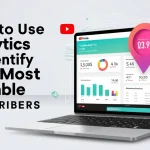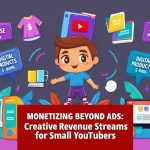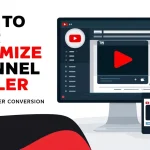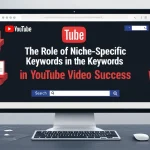Mastering the Art of YouTube Collaboration: Dos and Don’ts for Maximum Growth
Collaboration is the lifeblood of YouTube success. Whether you're an emerging creator or a seasoned pro, partnering with other creators can supercharge your growth. But there’s an art to doing it right. In this guide, we’ll walk you through the dos and don’ts of YouTube collaboration to help you maximize your potential and avoid common pitfalls.
Why YouTube Collaborations Matter
YouTube is a community-driven platform, and collaborations allow creators to:
- Expand Audience Reach: Tap into a collaborator's audience and introduce your channel to new viewers.
- Boost Credibility: Working with established creators can position you as a trusted figure in your niche.
- Strengthen Engagement: Fresh perspectives and combined efforts create content that captivates audiences.
Set Clear Goals for Your Collaborations
Before diving into a partnership, ask yourself:
- Do you want more subscribers or increased views?
- Are you looking to strengthen your personal brand or grow within a specific niche?
Clear goals help you find the right partner and define success.
The Dos of Successful YouTube Collaboration
1. Find the Right Partner
Not all creators are a perfect match. Look for partners who:
- Share similar audience demographics.
- Complement your content style or niche.
- Share your values and professionalism.
💡
Pro Tip: Use tools like
YouTube Analytics to understand your audience and find channels with overlapping viewers.
2. Plan with Precision
Good collaborations are built on solid planning.
- Develop a clear concept for the content.
- Agree on timelines, responsibilities, and deliverables.
- Outline how you’ll promote the content post-publishing.
3. Communicate Openly
Honest and transparent communication is key.
- Discuss expectations early on.
- Address any financial arrangements or content ownership upfront.
- Use collaboration tools like Slack or Trello to stay organized.
4. Engage Both Audiences
A collaboration isn’t just about creating great content; it’s about making both audiences feel involved.
- Introduce your collaborator to your viewers with excitement.
- Include calls-to-action (CTAs) encouraging viewers to subscribe to both channels.
- Promote the content on all social media platforms for maximum reach.
5. Create Evergreen Content
While trending topics can attract short-term attention, evergreen content ensures long-term value. For example, tutorials, how-to videos, or niche tips are more likely to generate views months or even years later.
The Don’ts of YouTube Collaboration
1. Don’t Choose a Mismatched Partner
Partnering with someone whose style or values clash with yours can alienate both your audience and theirs. Always prioritize compatibility over follower count.
2. Don’t Skip Written Agreements
Even if it’s a friendly collaboration, always have a written agreement. This protects both parties and avoids disputes over revenue sharing, content rights, or promotion plans.
3. Don’t Ignore Audience Expectations
If your audience follows you for tech reviews, suddenly posting a food-related collaboration may confuse or alienate them. Always align your collaborations with your core niche.
4. Don’t Rush
Quality takes time. Avoid the temptation to push out a collaboration before it's ready. Test the waters with smaller projects before committing to larger-scale collaborations.
5. Don’t Overdo It
Collaborating too frequently can dilute your brand and make your channel seem overly reliant on others. Strike a balance to maintain your individuality.
Examples of Effective Collaborations
Case Study 1: Successful Growth Through Collaboration
Two small cooking channels partnered to create a "10-Day Global Recipe Challenge." They cross-promoted each other's videos, engaging viewers to follow both channels for the full experience. The result? A 40% increase in subscribers for both.
Case Study 2: Lessons from a Failed Collaboration
A beauty channel partnered with a gaming channel for a crossover video. The mismatch confused audiences, leading to poor engagement and lost subscribers. Lesson: Stay in your niche and collaborate with creators your audience resonates with.
Actionable Strategies for Growth
1. Build Long-Term Partnerships
Turn one-off collaborations into ongoing partnerships. This builds familiarity between channels and allows audiences to look forward to repeated content themes.
2. Get Creative with Formats
Experiment with:
- Challenges: Collaborative challenges often go viral.
- Interviews: Introduce your audience to an expert or influencer in your niche.
- Series: Create multi-part content across both channels to encourage cross-subscriptions.
FAQs on YouTube Collaboration Tips and Strategies
Why are YouTube collaborations important for growth?
Collaborations allow creators to share audiences, increase exposure, and create unique content that appeals to a broader range of viewers. By working together, creators can benefit from each other’s expertise and credibility, helping to accelerate their growth.
How do I approach another YouTuber for a collaboration?
Start by researching their content and understanding their audience. Reach out via email or direct message with a personalized pitch. Highlight the mutual benefits, propose a clear idea for the collaboration, and keep the message professional yet friendly.
What are the biggest mistakes to avoid in YouTube collaborations?
Common mistakes include:
- Partnering with creators whose content doesn’t align with yours.
- Rushing the collaboration without proper planning.
- Ignoring the expectations of your audience.
- Skipping agreements, which can lead to disputes over content rights or earnings.
Can small YouTubers collaborate successfully with larger creators?
Yes, but it requires the right approach. Focus on offering unique value or an innovative idea that the larger creator might find beneficial. Building genuine relationships before proposing a collaboration can also increase your chances of success.
How can I measure the success of a YouTube collaboration?
Track metrics such as:
- Subscriber growth.
- Video views and watch time.
- Engagement (likes, comments, shares).
- Social media buzz or mentions.
Set clear goals before the collaboration to determine what success looks like for your channel.
Conclusion
Mastering YouTube collaboration is about more than just joining forces; it’s about aligning values, audiences, and goals to create content that resonates. By following these dos and don’ts, you can unlock new growth opportunities while fostering genuine connections in the YouTube creator community.
Last Updated: January 16, 2025























Comment (0)
No comments available.